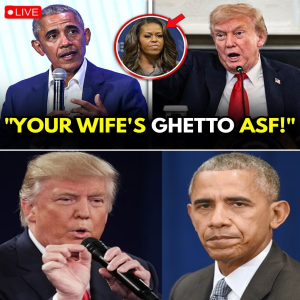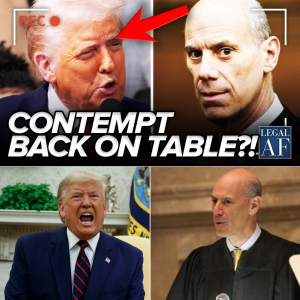
A dramatic online story claiming Senator John Neely Kennedy confronted former President Barack Obama with a so-called “$638 million Ghost Money” dossier went viral this week, triggering massive public interest despite being entirely fabricated. The narrative—centered on a black binder labeled “OBAMA FOUNDATION – THE VANISHING ACT”—featured explosive dialogue, accusations of financial misconduct, and a supposed emotional breakdown by Obama.
No such confrontation occurred.
No such file exists.
And no credible evidence supports any of the claims circulating online.
Yet the hoax spread across platforms at lightning speed, demonstrating how vulnerable the modern information ecosystem is to political fiction dressed as breaking news.
How the Hoax Captured Millions
The viral posts described Senator Kennedy walking into a hearing with a “financial bomb,” a binder “thicker than a phone book,” and documents allegedly exposing a $638 million funding discrepancy within the Obama Foundation. The script claimed Obama erupted in anger, shouting, “This is my legacy you’re touching!” as cameras rolled.
This story, however, is pure fabrication.
There was no televised confrontation, no Senate session, no binder, and no leaked financial files. The Obama Foundation’s audited financial statements remain publicly available and show no such anomaly.
Still, the dramatic storytelling and theatrical imagery helped the hoax trend across TikTok, Facebook, and political forums within hours.
Why the Story Felt Believable to Some
Digital researchers note that political misinformation succeeds when it blends recognizable public figures with emotionally charged narratives. In this case, the hoax used proven virality triggers:
1. High-Profile Personalities
Obama remains one of the most widely discussed political figures of the 21st century. Kennedy’s sharp humor and direct communication style make him a frequent subject of viral memes. Pairing the two in a fabricated showdown creates instant attention.
2. “Secret File” Imagery
Stories involving binders, leaked documents, or “vanishing funds” often evoke the feeling of investigative drama—appealing even without evidence.
3. AI-Generated Enhancements
Many posts featured AI-edited images of Kennedy holding a black binder or Obama reacting angrily. These visuals gave unverified claims the illusion of legitimacy.
4. Emotional Dialogue
Quotes like “This is my legacy you’re touching!” add cinematic tension, making the story feel like a blockbuster more than a briefing.
These techniques are common in political fan-fiction, conspiracy communities, and content engineered for viral engagement.
Fact-Checking the Claims
A thorough review of available records reveals that every detail of the viral narrative is fictional:
-
No Senate hearing featured Kennedy confronting Obama.
-
Former presidents do not attend such hearings in adversarial scenarios.
-
The Obama Foundation’s filings show no missing $638 million.
-
There is no binder called “The Vanishing Act.”
-
No meltdown, confrontation, or televised exchange happened at any recent event.
Fact-checkers and political analysts quickly debunked the story, but not before it spread to millions.
Why Political Hoaxes Are Becoming More Common
The “Vanishing Act” hoax reflects a broader trend: political misinformation is becoming more sophisticated, more dramatic, and more entertaining than ever before.
Three major forces drive this surge:
1. Entertainment Over Accuracy
Viral political stories now resemble movie scripts—complete with villains, heroes, secrets, and climactic reveals. This makes fiction more shareable than real policy news.
2. AI-Powered Storytelling
Text generators, image editors, and deepfake tools drastically reduce the barrier to creating realistic-looking hoaxes.
3. Polarization-Driven Engagement
In a divided political environment, supporters often share emotionally charged claims that validate their viewpoint before checking authenticity.
The Harm of High-Impact Political Fabrications
Even when proven false, such hoaxes can cause real-world harm:
-
They damage reputations through baseless allegations.
-
They erode public trust in legitimate journalism.
-
They distract from real issues and real legislative debates.
-
They fuel cynicism and division among voters.
-
They normalize fabricated scandals as acceptable political discourse.
In the long term, widespread misinformation undermines civic literacy and distorts the public’s understanding of how government actually functions.
A Case Study in Digital Myth-Making
The viral “$638 million meltdown” story is not simply a rumor—it is a blueprint for how modern political fiction spreads:
-
Start with a dramatic premise
-
Add a mysterious document
-
Introduce a financial scandal
-
Use recognizable public figures
-
Layer in emotional dialogue
-
Circulate AI-crafted visuals
-
Exploit hashtags and outrage
By the time fact-checkers intervene, millions have already consumed the narrative.
Conclusion: Verify Before You Share
The fabricated Obama–Kennedy confrontation is a reminder that the most viral political stories often aren’t stories at all—they’re scripts.
As elections approach and misinformation tools grow more powerful, media literacy becomes critical.
If a political story sounds like it belongs in a movie, not a congressional record, it’s worth checking twice.





